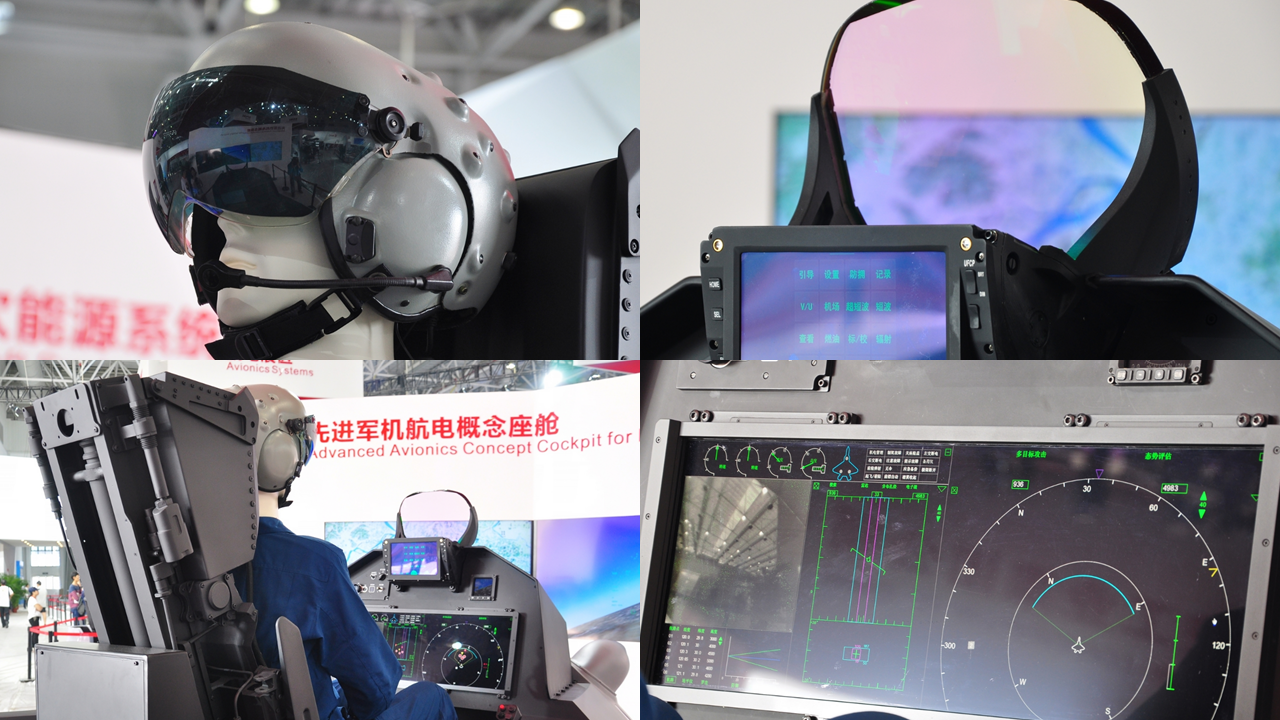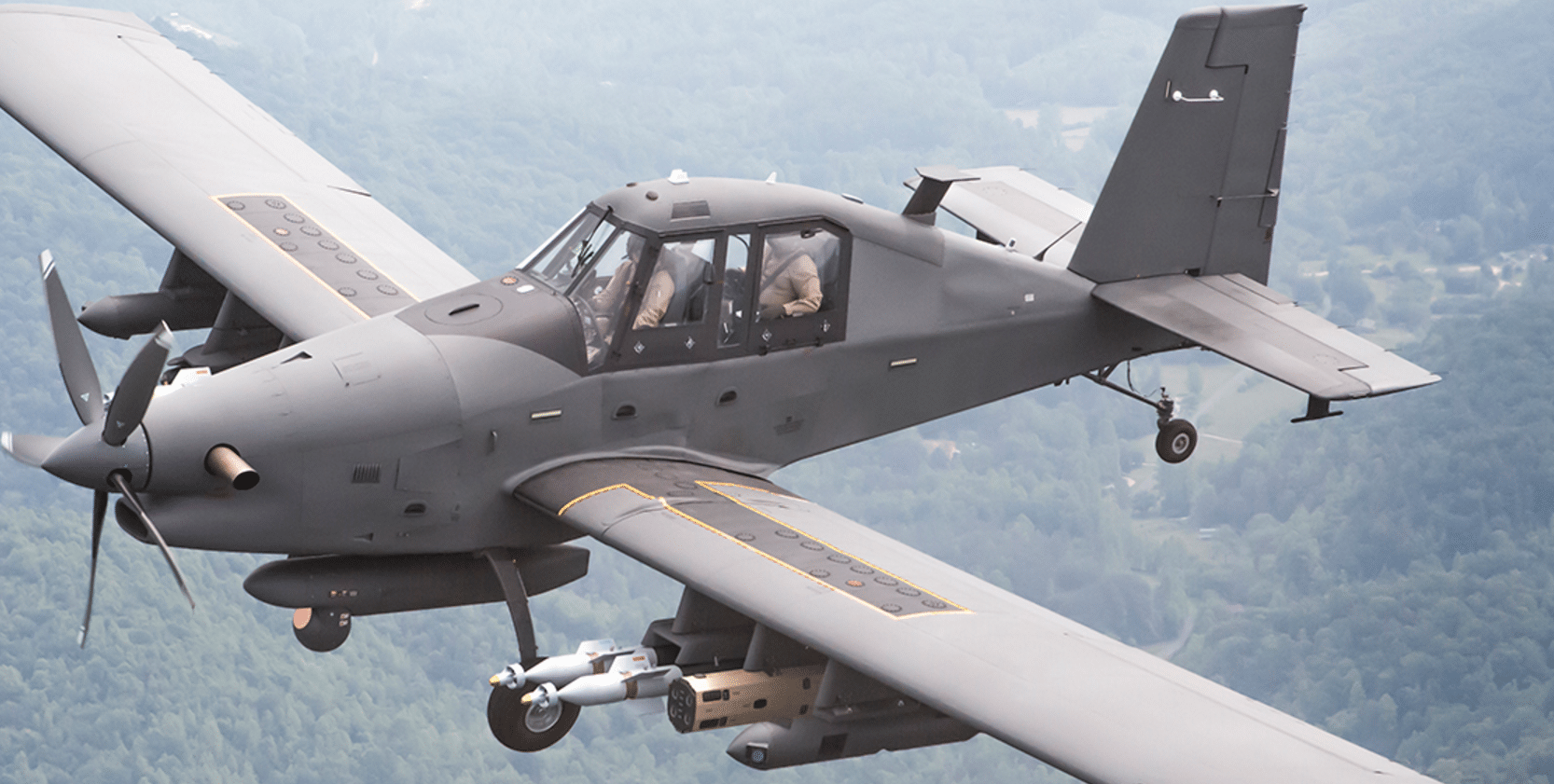3237Views 2Comments

AVIC’s HMD/S and next-gen cockpit concepts outline strong Chinese defence industry progress
At the Zhuhai Air Show, which concluded on Sunday, Aviation Industry Corporation of China (AVIC) showcased several subsystems currently under development in China for use on future combat aircraft.
These subsystem concepts included a helmet-mounted display and sight (HMD/S) system, a new single panel multi-functional display (MFD), an active electronically-scanned array (AESA) radar paired with an infrared search and track (IRST) system, and a cockpit with a flight-control stick on the side.
None of these systems are product offerings, but concepts reflecting subsystems under development in several of China’s leading military electronics development institutes. However, fact that these concepts are strikingly in line with wider defence industry trends indicates that the Chinese industry is observing these trends, and more importantly, is seeking to emulate them.
For example, the AVIC HMD/S concept appears to borrow several overt design cues from the BAE Striker II HMD/S, indicating that China could perhaps be working on a digital HMD/S that displays information across the full visor (instead of a monocle). Granted, it would be grossly premature to discuss the specific performance parameters of Chinese HMD/S technology considering that the displays were conceptual mock-ups or, at best, very early prototypes, but the developmental track is ambitious.
Ultimately, the People’s Liberation Army Air Force (PLAAF) and People’s Liberation Army Navy (PLAN) will be looking to ensure that domestic HMD/S technology cross specific performance thresholds (to warrant usage), such as responsive cueing with air-to-air munitions and ground-facing sensors, instead of matching with industry leading solutions. Nonetheless, initiating work based on new platforms, such as digital display instead of legacy cathode ray tube (CRT), is a forward-leaning approach, even at the cost of not having a serviceable solution at the present.
The single panel MFD is another increasingly adopted industry trend. From the F-35 Lightning II to the JAS-39E/F Gripen NG, single panel MFDs are gradually being sought to supplant multiple MFDs. It is not clear if the AVIC concept is showcasing a liquid crystal display (LCD) or light-emitting diode (LED) display, but the Chinese industry will likely be steering towards the latter.
The side-stick configuration, mainstreamed by the General Dynamics F-16 and since adopted by the F-35 and Dassault Rafale, is interesting in that it indicates that the Chinese industry is willing to even examine alternate approaches which are not widespread industry trends. Numerous cockpit mock-ups purported to be of the J-20 indicate that the side-stick configuration is being embraced by the Chinese in their next-generation fighter platforms. This could include the FC-31 (if it secures complete development funding).
AESA radars and nose-mounted IRST have already been adopted on in-service designs, namely the Chengdu J-10B and J-10C and Shenyang J-11D (if not earlier iterations). In fact, one could consider that this is not so much as of a concept at this stage than actual products, among them the KLJ-7A AESA radar.
If adopted, these concepts will likely be rolled out in a staggered fashion, and they may not be solely tied to next-generation fighters. For example, the Chengdu J-10 and Shenyang J-11 are poised to serve as the PLAAF and PLAN’s mainstay platforms in the long-term. It is plausible that these concepts will make their way to future variants of these platforms, perhaps in the short-term.
By displaying these concepts through AVIC, China is also making a play at the export market. First, Beijing is strongly indicating that it has contemporary technology work in place. Second, it will be banking on its inherent cost and accessibility advantages to pry traditional U.S. and European equipment buyers. This is already taking place in the armed unmanned aerial vehicle (UAV) market with Gulf Arab states buying and seemingly renewing their commitment to Chinese armed UAVs.
The third, and potentially the most important aspect, is that China’s entry as an advanced technology vendor could attract countries that are not even in the market. In other words, countries that are currently unable to procure American AESA radars or European munitions due to political and economic barriers could look to China. In effect, countries that did not even envisage procuring such technology in the first place could begin demanding it, and China would be the leading supplier. Expanding the market, and then commanding it entirely, would be a watershed moment for the Chinese defence industry.



2 Comments
by Sami Shahid
Seems like Chinese are producing all this stuff for their J-20 and Pakistan
by Saptarshi Dasgupta
Now i know why Pakistan cancelled the FC-20/J-10B order. PAF is looking to match our Pak-Fa,Rafale and Super Sukhoi upgrades with FC-31.PAF will use the JF-17 model and customise the FC-31 . Won’t be surprised if Pakistan goes for Turkish stealth fighter and FC-31 both after the complete JF-17 delivery takes place including the AESA Block 3 JF-17.